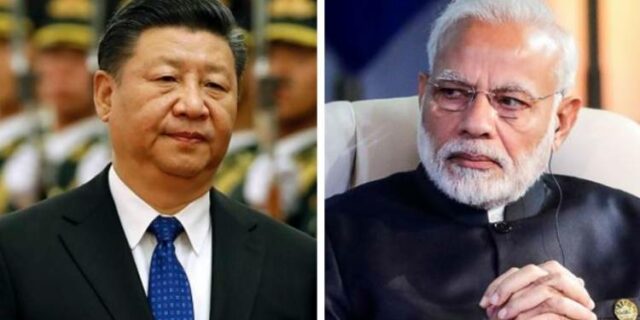NEW DELHI: Debating, discussing and deliberating on formation of joint or theatre commands apart, the armed forces have also decided to undertake a study to assess India’s possible options and responses to a potential invasion of or attack on Taiwan by China.
Chief of Defence Staff (CDS) Gen. Anil Chauhan ordered the study during a conclave of top military commanders in Lucknow late last month. The idea, according to sources, is to be ready with options in case a conflict over Taiwan breaks out.
This decision was taken in the wake of persistent reports and possibly inputs shared by the U.S. and Japanese intelligence agencies on Chinese plans over its Taiwan policy. This is seen as essential since India has recalibrated its relations with the United States and is a member of the Quad, the grouping that also consists of the U.S., Japan and Australia.
On Saturday, the South China Morning Post (SCMP), a Hong Kong-based daily, published a report headlined ‘Mainland China airs documentary signalling military preparation for Taiwan attack and willingness to sacrifice,’ essentially saying ‘Beijing is trying to send strong signals about its preparation for an attack on Taiwan, with People’s Liberation Army soldiers pledging to sacrifice themselves’.
The SCMP report adds: “The documentary series offers a view—albeit restricted—of the PLA’s operation scenarios, such as seizing air superiority, sea control and information tech suppression before launching an amphibious landing.”
Some senior military observers such as Philip Davidson, former chief of the US Indo-Pacific Command, have said in the recent past that the PLA is likely to make the move by 2027, the deadline of the PLA’s centennial goal of becoming a world-class military. Davidson’s warning is in keeping with the U.S. assessment but it is for the first time that India’s military planners are looking at drawing up plans to meet contingencies arising out of a possible conflict far from its shores.
The study will draw up calibrated plans taking into account various possible scenarios that may emerge during the conflict. The study team, drawn from across the three services, has been told to look at options in case the United States seeks India’s help.
India’s own stand in case of a hot war in the Taiwan Straits will depend on various factors such as the duration of the conflict, the involvement of other nations led by the United States and resistance offered by Taiwan.
For instance, the U.S. military may want to use India’s airfields and naval bases for refuelling, replenishment and repair facilities in the initial stages of the conflict, under the foundational agreement such as LEMOA or Logistics-Exchange Memorandum of Agreement that the two countries signed in 2016.
Basically, LEMOA is a facilitating agreement that establishes basic terms, conditions, and procedures for reciprocal provision of logistic support, supplies, and services between the armed forces of India and the United States.
Logistic support, supplies and services include food, water, billeting, transportation, petroleum, oils, lubricants, clothing, communication services, medical services, storage services, training services, spare parts and components, repair and maintenance services, calibration services, and port services.
Another possible scenario in which a potential Taiwan conflict turns into a military stalemate may require India to get involved beyond just providing logistics support to the U.S. military. Under such circumstances, if India decides to open a second front for China in its southwest along the Himalayan frontier, what shape such a military operation can and should assume is a question the study will attempt to answer.
Whether to present China with a ‘two-front’ conundrum will be a political and diplomatic call but the Indian military wants to be ready with options and not wait for the actual conflict to break out over Taiwan, sources said.
This study, to be completed within a specified time frame, comes on the back of recent intense deliberations within the Indian military that the three forces must imbibe from the ongoing Russia-Ukraine war.
Related Links:
















